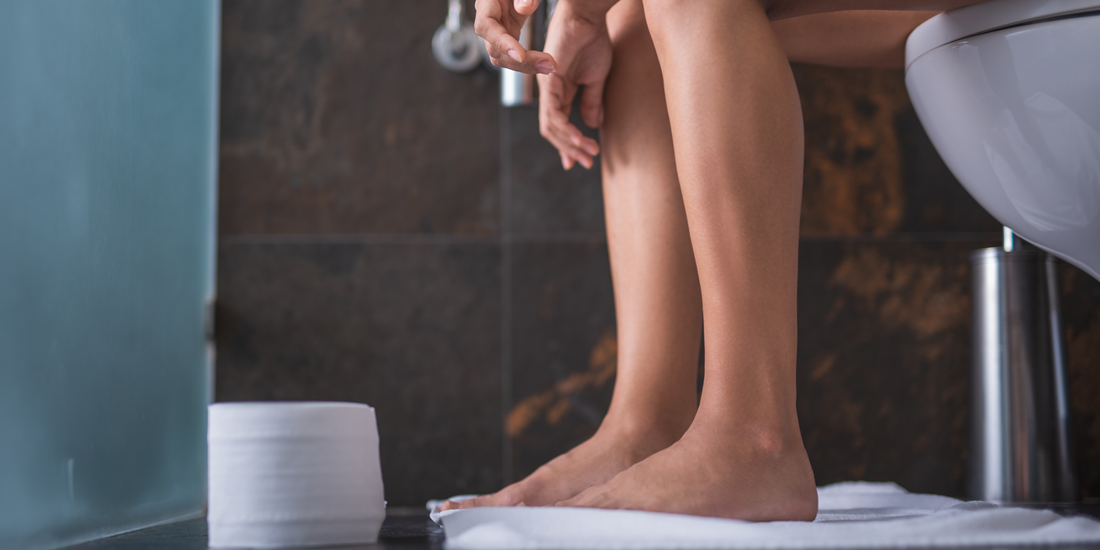|
Urinary incontinence and dysfunction can be a frustrating and embarrassing experience for so many. We've seen even the most confident, capable individuals left feeling hopeless and like they have nowhere to turn all because of leaking, urgency, and frequency. However, it's essential to know that you're not alone and that there are solutions to help alleviate your symptoms. Our goal is to help crush the stigma surrounding urinary incontinence and dysfunction and provide you with hope and relief.
If you're looking for tips and tricks to find relief before booking an appointment with a pelvic floor PT office in Baton Rouge, keep reading. In this blog post, we'll provide you with our top products and techniques to help you hold on until you find true relief. Please note that these tips are temporary Band-Aids, and true relief comes when you address the root cause of your symptoms.
0 Comments
Do you find yourself constantly making excuses for your frequent bathroom breaks or laughing off the occasional leakage? Catch yourself saying, “Nooo don’t make me laugh I’m going to pee my pants”? You're not alone. Millions of people in the United States suffer from bladder dysfunction, yet so many of us simply brush it off as a normal part of life. https://www.urineincontinence.com.au/other/frequent-urination-night-ornocturia#:~:text=Nocturia%20is%20a%20very%20common,once%20or%20more%20at%20night https://www.mayoclinichealthsystem.org/hometown-health/speaking-of-health/is-urine-incontinence-normal-for-women The truth is, bladder dysfunction is not something to be taken lightly. It can significantly impact your quality of life, causing embarrassment and discomfort, and even leading to social isolation. In this blog post, we'll be shedding some light on this common condition, and helping you to spot the signs of bladder dysfunction in yourself. Types of Bladder Dysfunction There are several types of bladder dysfunction, each with their own unique symptoms and causes. Here are some of the most common: Stress Incontinence: This occurs when urine leaks out during activities such as laughing, coughing, sneezing, bending, or lifting. This is what’s happening when your mom, aunt, or grandma say, “Every time I sneeze, I pee a little!”. It's caused by a mechanical issue where the pressure in your bladder is stronger than the pressure in your pelvic floor. . Stress incontinence can also be due to a timing issue, if your pelvic floor squeezes after the pressure in your bladder increases, you’ll still leak no matter how fit your pelvic floor is. Pelvic floor physical therapy can be effective in treating this issue by strengthening the pelvic floor muscles whether that means lengthening the muscle or working to make it shorter. This will help you to stay dry no matter how funny your friend is and regardless of how intense your workout will be that day. https://phoenixpt.com/statistics/#:~:text=Urinary%20Incontinence%20affects%20200%20million%20people%20worldwide.&text=One%20in%20four%20women%20over,episodes%20of%20leaking%20urine%20involuntarily.&text=On%20average%2C%20women%20wait%206.5,bladder%20control%20problem(s). Urge Incontinence: This is the classic, key in the door scenario, you’re almost to the bathroom but you just don’t quite make it. You’ll often experience a sudden, intense urge to urinate and are unable to hold it long enough to reach the restroom. This is usually caused by an overactive bladder or irritation in the pelvic floor muscles. Mixed Incontinence: This is a combination of stress and urge incontinence, where you experience symptoms of both conditions simultaneously. Urgency: This is when your brain is unable to differentiate between the different levels of urgency being relayed from the bladder until it’s too late. Think back to our previous blog post when we discussed the three levels, we want you to be able to hear the bladder’s whispers, not just the shouts. Frequency: If you find yourself going to the bathroom more than every 3-5 hours, this may be a sign of bladder dysfunction. Your bladder should be able to hold urine for several hours before you feel the urge to go again. If you catch yourself running to the bathroom every 45 minutes but you “drink a lot of water,” that’s still a problem driven by your pelvic floor. It’s not that your bladder is small, it’s because it’s not flexible enough. Emptying Troubles: If you encounter challenges initiating or ending your urine flow or experience a weak and inconsistent stream with interruptions or dribbling, it may indicate issues with your pelvic floor muscles. As we previously discussed in a blog post, your bladder and pelvic floor muscles engage in a "red light/green light" game. If they are not working in harmony, this can result in delayed start of stream, difficulty emptying, and other related issues. Discomfort or Burning: If you experience burning or discomfort during urination, it could be due to an infection or issues with the pelvic floor muscles. Frequent UTIs with negative urine cultures may also indicate a problem with the muscles. We work with physicians to help get to the root of the issue, whether that due to the muscle or an infection. Nighttime Urination: We often hear people say “Oh my gosh I have to pee 3-4 times before I can actually fall asleep cause it feels like there’s still urine left in my bladder,” or “I wake up every night to pee but I always drink a lot of water before bed.” Waking up multiple times to urinate or feeling like there is still urine in your bladder after urinating are both signs of bladder dysfunction.
Treatment for Bladder Dysfunction: Pelvic floor physical therapy is often an effective treatment for bladder dysfunction. Through strengthening exercises and relaxation techniques, your pelvic floor muscles can be trained to function properly and alleviate symptoms. In addition, lifestyle changes such as reducing caffeine and alcohol intake, and maintaining a healthy diet can also improve bladder function. Don't let bladder dysfunction control your life. Seek help from a pelvic floor physical therapist today to address the issue and improve your quality of life. Urine Good Hands : Understanding the Bladder, How it Works, & The Role of the Pelvic Floor3/22/2023 Hey there! In previous blog posts, we've talked about the importance of the pelvic floor and how it affects our bodies. Today, we're going to dive into the bladder and how it works when everything is functioning properly. Let's think of the bladder like a balloon. It's a flexible object that can expand and shrink, just like when you're trying to learn how to do a split. With practice and persistence, your leg becomes more and more flexible, and similarly, the bladder can adjust to its contents. The kidneys produce a drop of urine every ~14 seconds, which flows down the ureter and lands in the bladder. This cycle continues until the bladder is slowly filled. As it fills up, you'll start to feel a stretching sensation, just like when you're stretching any other part of your body. This is the point where your brain tells you that you need to go to the bathroom.
A Guide to the World of Laxatives, Stool Softeners, Enemas, and Supplements for Bowel HealthINTRO In our previous blogs, we discussed the importance of healthy bowel function, what is normal and what is not, and what happens when things go wrong including constipation & fecal incontinence. Today, we're diving deeper into the topic and exploring the worlds of laxatives, stool softeners, and enemas. With so much buzz around "gut health" and its various aspects, it's essential to understand these tools' proper use to maintain optimal digestive function. Join us as we navigate through the benefits, risks, and best practices of these bowel aids. Let's get started! LAXATIVES & STOOL SOFTENERS First, let’s talk about what we’re all probably the most familiar with, laxatives. The laxative industry is MASSIVE in the United States with an estimated $725 million spent annually. Yes, you read that right, $725 MILLION. This number is even more shocking when you realize that most people who take laxatives don’t actually need them and that their constipation woes would go away with an increase in fluid intake, adding fiber to their diet, moving their bodies more, and seeing a pelvic floor physical therapist. There are several different classifications of laxatives which include:
We always recommend consulting your doctor and pelvic floor physical therapist before taking any laxatives. ENEMAS Enemas are a procedure that involves the introduction of liquid into the rectum to promote bowel movement. They are commonly used to relieve constipation or to prepare for certain medical procedures such as a colonoscopy. Enemas can be useful in the context of pelvic floor dysfunction when constipation is a contributing factor. When stool sits in the rectum for prolonged periods, it can contribute to pelvic floor muscle tension and discomfort. Enemas can be a useful tool for promoting regular bowel movements and reducing pelvic floor muscle tension. However, there are potential risks associated with enemas, such as rectal bleeding, perforation of the rectum, and infection. It is important to follow proper instructions and consult with a healthcare professional, such as a pelvic floor physical therapist, before using an enema. A pelvic floor physical therapist can provide guidance on the safe and effective use of enemas and work with patients to develop a comprehensive bowel management plan that addresses their unique needs. IN CONCLUSION
Although laxatives and enemas can provide temporary relief for constipation and bowel dysfunction, it's essential to address the root cause of the problem for long-term improvement. Using these products without addressing the underlying issues may only provide temporary relief, and the symptoms are likely to recur. That's why we recommend seeking professional help to address the root cause of your symptoms. Pelvic Floor Physical Therapy is a highly effective treatment option for bowel dysfunction, including constipation, fecal incontinence, or a combination of the two. Our residency-trained, board-certified pelvic floor physical therapist can provide personalized care to help you overcome these issues and improve your quality of life. To learn more and book a complimentary phone consultation, simply click HERE or call our office at (225) 831-5140. Don't let bowel dysfunction control your life - take the first step towards relief today. Sources: https://www.verywellhealth.com/osmotic-laxatives-for-constipation-1944785 https://www.healthline.com/health/digestive-health/bulk-forming-laxatives#benefits https://www.everydayhealth.com/digestive-health/all-about-laxatives.aspx https://www.rxlist.com/how_do_lubricant_laxatives_work/drug-class.htm https://www.verywellhealth.com/osmotic-laxatives-for-constipation-1944785 https://www.mayoclinic.org/drugs-supplements/laxative-oral-route/description/drg-20070683#:~:text=Stimulants%E2%80%94Stimulant%20laxatives%2C%20also%20known,of%20laxative%20for%20self%2Dtreatment. https://www.verywellhealth.com/before-you-use-stool-softeners-1944786 |









 RSS Feed
RSS Feed